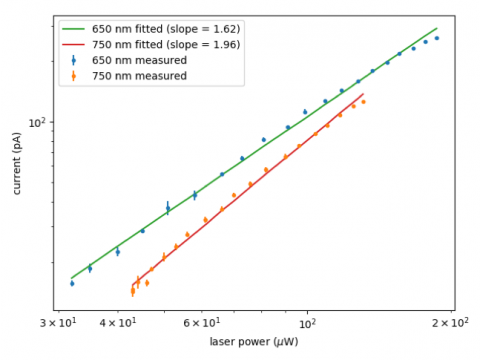Non-linear photoemission from an alkali-antimonide cathode
In order to push the emittance of alkali antimonide photocathodes down as far as possible, the consensus so far has been to use a laser with just enough photon energy to emit electrons, known as "threshold", so that the excess energy, which is directly connected to emittance, is as low as possible. However, with the advent of ultrafast techniques, such as ultrafast electron diffraction, lasers are used with sub-picosecond pulse lengths, and thus, extremely high peak intensities (~10 MW/cm^2). With intensities this high, it is possible for an electron to be emitted by absorbing two photons, not just one, which increases its excess energy drastically. We found signs of this non-linear process which means that emitting at threshold actually might not be optimal for emittance.

